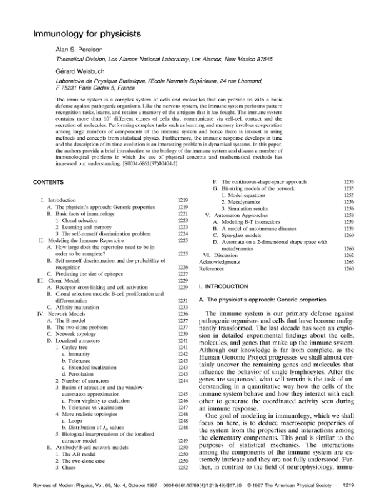Jean Daillant, Alain Gibaud9783540661955, 3-540-66195-6
Table of contents :
Lecture Notes in Physics……Page 1
Foreword……Page 5
Contents……Page 7
List of authors……Page 14
Acknowledgements……Page 16
Introduction……Page 17
1.1 Introduction……Page 22
1.2.1 Conventions……Page 23
1.2.2 Wave Equation……Page 24
1.2.3 Intensity, Current and Flux……Page 26
1.2.4 Scattering Length and Cross-Sections……Page 28
1.2.5 The Use of Green Functions……Page 30
1.2.6 Green Functions: the Case of the Electromagnetic Field……Page 32
1.3.1 Introduction……Page 35
1.3.2 The Optical Theorem and its Extensions……Page 36
1.3.3 The Extinction Length and the Born Approximation……Page 42
1.3.4 When the Interaction Becomes Stronger……Page 43
1.4.1 General Considerations……Page 45
1.4.2 Classical Description: Thomson Scattering by a Free Electron……Page 46
1.4.3 Classical Description: Thomson Scattering by the Electrons of an Atom, Rayleigh Scattering……Page 47
1.4.4 Quantum Description: a General Expression for Scattering and Absorption……Page 50
1.4.5 Quantum Description: Elastic and Compton Scattering……Page 53
1.4.6 Resonances: Absorption, Photoelectric Effect……Page 57
1.4.7 Resonances: Dispersion and Anomalous Scattering……Page 60
1.4.8 Resonances: Dispersion Relations……Page 62
1.5.1 Introduction……Page 67
1.5.2 Non Resonant Magnetic Scattering……Page 70
1.5.3 Resonant Magnetic Scattering……Page 71
1.5.5 The Effect of an Anisotropy in the Index of Refraction……Page 73
1.A Appendix: the Born Approximation……Page 75
References……Page 78
2.1 Introduction……Page 79
2.2.2 Height Probability Distributions……Page 80
2.2.3 Homogeneity and Ergodicity……Page 82
2.2.4 The Gaussian Probability Distribution and Various Correlation Functions……Page 84
2.2.5 More Complicated Geometries: Multilayers and Volume Inhomogeneities……Page 86
2.3 Description of a Surface Scattering Experiment, Coherence Domains……Page 87
2.3.1 Scattering Geometry……Page 88
2.3.2 Scattering Cross-Section……Page 89
2.3.3 Coherence Domains……Page 91
2.4.1 To What Extent is a Statistical Formulation of the Diffraction Problem Relevant?……Page 93
2.4.2 Notions on Coherent (Specular) and Incoherent (Diffuse) Intensity……Page 98
2.5.1 The Differential Scattering Cross-Section……Page 99
2.5.3 Self-Affine Rough Surfaces……Page 102
References…….Page 104
3.1.1 Basic Concepts……Page 106
3.1.2 Fresnel Reflectivity……Page 107
3.1.4 The Penetration Depth……Page 115
3.2.1 The Matrix Method……Page 118
3.2.2 The Refraction Matrix for X-Ray Radiation……Page 122
3.2.3 Reflection from a Flat Homogeneous Material……Page 123
3.2.4 A Single Layer on a Substrate……Page 124
3.2.5 Two Layers on a Substrate……Page 125
3.3 From Dynamical to Kinematical Theory……Page 127
3.4 Influence of the Roughness on the Matrix Coefficients……Page 132
3.A.1 Second-Order Rayleigh Calculation for a Sinusoidal Grating……Page 135
3.A.3 Simple Derivation of the Debye-Waller and, Croce-Névot Factors……Page 137
References……Page 139
04.pdf……Page 140
4.1.1 Propagation Equation……Page 141
4.1.2 Integral Equation……Page 142
4.1.3 Derivation of the Green Functions Using the Reciprocity Theorem……Page 144
4.1.4 Green Function in a Vacuum……Page 145
4.1.5 Green Function for a Stratified Medium……Page 146
4.1.6 Differential Scattering Cross-Section……Page 147
4.2.1 Expression of the Differential Scattering Cross-Section……Page 149
4.2.2 Example: Scattering by a Single Rough Surface……Page 150
4.3 Distorted-Wave Born Approximation……Page 151
4.3.1 Case of a Single Rough Surface……Page 152
4.3.2 General Case of a Stratified Medium……Page 153
4.3.3 Particular Case of a Film……Page 156
4.4 Polarisation Effects……Page 159
4.5.1 Density Inhornogeneities in a Multilayer……Page 160
4.5.2 Density Fluctuations at a Liquid Surface……Page 161
4.6 Further Approximations……Page 162
4.7.1 Expression of the Scattered Intensity……Page 163
4.7.2 Wave-Vector Resolution Function……Page 165
4.8 Reflectivity Revisited……Page 167
4.A Appendix: the Reciprocity Theorem……Page 169
4.B Appendix: Verification of the Integral Equation in the Case of the Reflection by a Thin Film on a Substrate……Page 171
4.C Appendix: Interface Roughness in a Multilayer Within the Born Approximation……Page 172
4.D.1 Formal Theory……Page 174
4.D.2 Formal Kinematical Treatment by First Order Born Approximation……Page 176
4.D.3 Formal Treatment by a Distorted Wave Born Approximation……Page 177
References……Page 180
5.1 Introduction……Page 182
5.2.2 Neutron-Matter Interaction……Page 184
5.3.1 Neutron Optical Indices……Page 187
5.3.2 Critical Angle for Total External Reflection……Page 188
5.3.4 Reflection on a Homogeneous Medium ,……Page 189
5.4.1 Interaction of the Neutron with an Infinite Homogeneous Layer……Page 191
5.4.2 Solution of the Schr8dinger Equation……Page 193
5.4.3 General Solution……Page 194
5.4.4 Continuity Conditions and Matrices……Page 195
5.4.5 Reflection on a Magnetic Dioptre……Page 198
5.5.1 Interface Roughness……Page 202
5.5.2 Angular Resolution……Page 204
5.6.1 Introduction……Page 205
5.6.2 Time of Flight Reflectometers……Page 206
5.7 Polymer Examples……Page 207
5.8.1 Absolute Measurement of a Magnetic Moment……Page 208
5.8.2 Bragg Peaks of Multilayers……Page 209
5.8.3 Measurement of the In-Plane and Out-Of-Plane Rotation of Moments. Measurement of the Moment Variation in a Single Layer……Page 210
5.8.4 Selective Hysteresis Loops……Page 212
References……Page 213
6.1.1 Surface Free Energy……Page 215
6.1.2 Step Free Energy……Page 216
6.1.4 Surface Stiffness……Page 217
6.1.5 Surface Chemical Potential……Page 218
6.2.1 Adatoms, Steps and Thermal Roughness of a Surface……Page 220
6.2.3 Smooth and Rough Surfaces……Page 222
6.2.4 Diffraction from a Rough Surface……Page 224
6.3.2 Supersaturation and Vapour Deposition……Page 226
6.3.3 Nucleation on a High Symmetry Substrate……Page 227
6.3.4 Kink-Limited Growth Kinetics……Page 228
6.3.5 Scaling……Page 229
6.3.6 Surface-Diffusion-Limited Growth Kinetics……Page 231
References……Page 232
7.1.1 Reflectivity Experiments……Page 233
7.2.1 Co/Glass – Self-Affine Gaussian Roughness……Page 239
7.2.2 Si Hornoepitaxy on Misoriented Si Substrate. Structured Roughness……Page 242
7.3 Conclusion……Page 245
References……Page 247
8.1 Introduction……Page 248
8.2 Description of Rough Multilayers……Page 250
8.2.3 Correlation Properties of Different Interfaces……Page 251
8.3 Setup of X-Ray Reflectivity Experiments……Page 253
8.3.1 Experimental Setup……Page 254
8.3.2 Experimental Scans……Page 255
8.4.1 Roughness with a Gaussian Interface Distribution Function……Page 257
8.4.2 Stepped Surfaces……Page 264
8.4.3 Reflection by “Virtual Interfaces” Between Porous Layers……Page 265
8.5 Non-Specular X-Ray Reflection……Page 266
8.5.1 Interfaces with a Gaussian Roughness Profile……Page 267
8.5.2 The Main Scattering Features of Non-Specular Reflection by Rough, Multilayers……Page 270
8.5.3 Stepped Surfaces and Interfaces……Page 275
8.5.4 Non-Coplanar NSXR……Page 278
8.6 Interface Roughness in Surface Sensitive Diffraction Methods……Page 280
8.7 X-Ray Reflection from Multilayer Gratings……Page 282
8.7.1 Theoretical Treatments……Page 283
8.7.2 Discussion……Page 288
8.7.3 Reflectivity from Rough Multilayer Gratings……Page 289
Acknowledgments……Page 290
8.A.1 Reflection from Planar Surfaces and Interfaces……Page 291
8.A.2 Periodic Multilayer……Page 293
8.A.3 Reciprocal Space Representation of DWBA……Page 294
References……Page 295
9.1 Statistical Description of Liquid Surfaces……Page 297
9.1.1 Capillary Waves……Page 298
9.1.2 Relation to Self-Affine Surfaces……Page 301
9.1.3 Bending Rigidity……Page 302
9.2.1 Specific Experimental Difficulties……Page 303
9.2.2 Reflectivity……Page 304
9.2.3 Diffuse Scattering……Page 306
9.3 Some Examples……Page 310
9.3.1 Simple Liquids Free Surface……Page 311
9.3.2 Liquid Metals……Page 312
9.3.3 Surfactant Monolayers……Page 313
9.4 Liquid-liquid Interfaces……Page 316
References……Page 319
10.1 Introduction……Page 321
10.2 Thin Polimer Films……Page 322
10.3 Polymer Bilayer Systems……Page 326
10.4 Adsorbed Polymer Layers……Page 330
10.5 Polymer Brushes……Page 331
10.6 Polymer-Metal Interfaces……Page 335
10.7 Sperading of Polymers……Page 336
10.8 Dewetting of Polymers……Page 337
References……Page 339
Main Notation Used in This Book……Page 340
Index……Page 342







Reviews
There are no reviews yet.